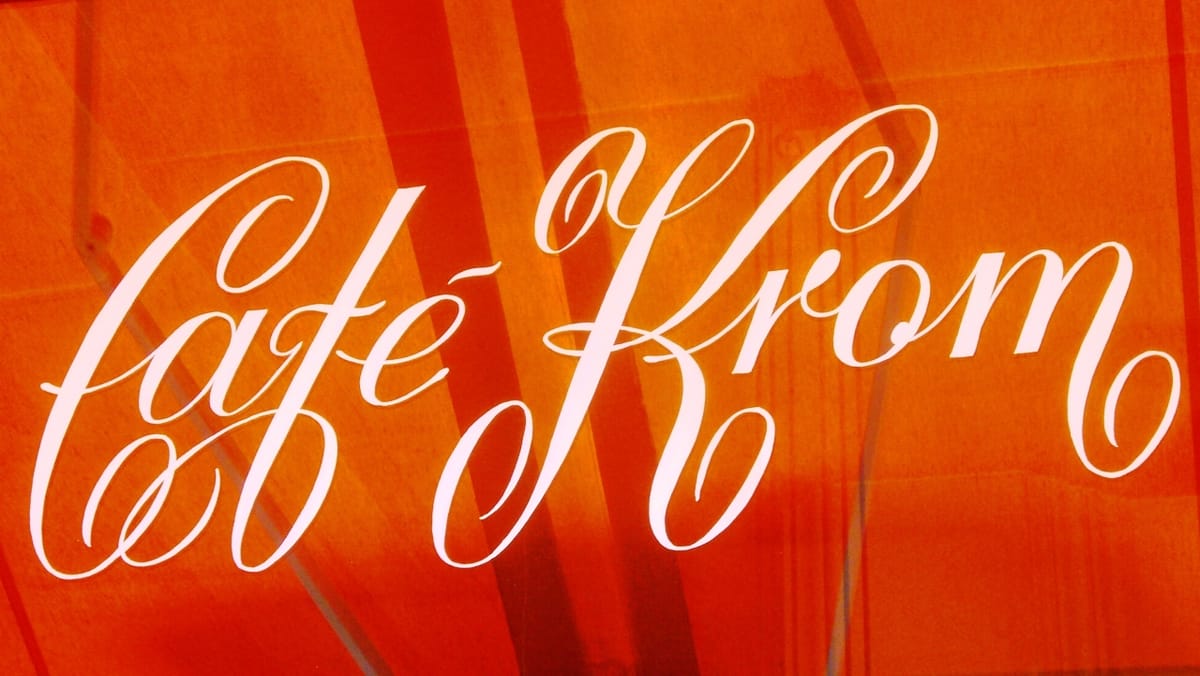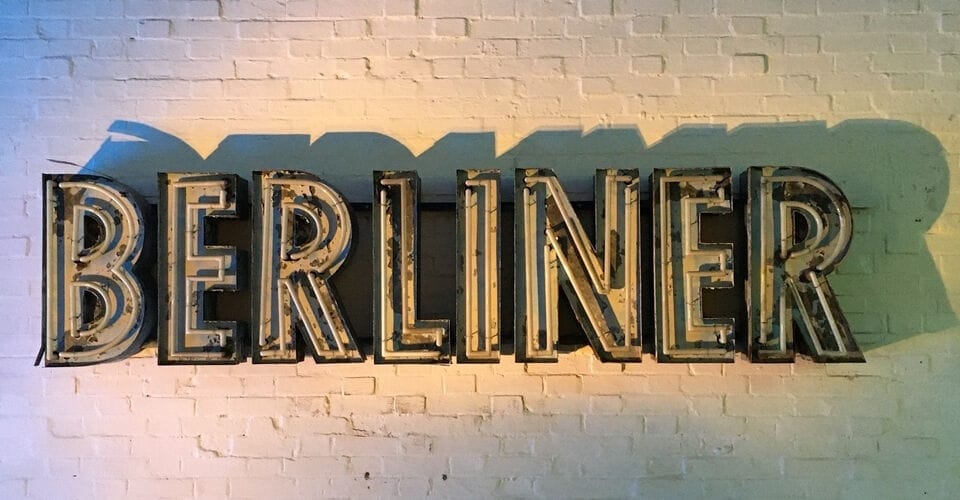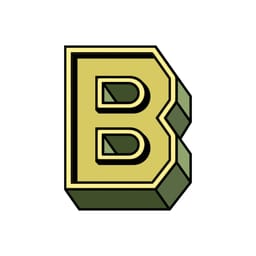A Final Resting Place for Letters at the Buchstabenmuseum
As the Berlin museum celebrates its 20th anniversary, the Letterforms remain the stars of the show.
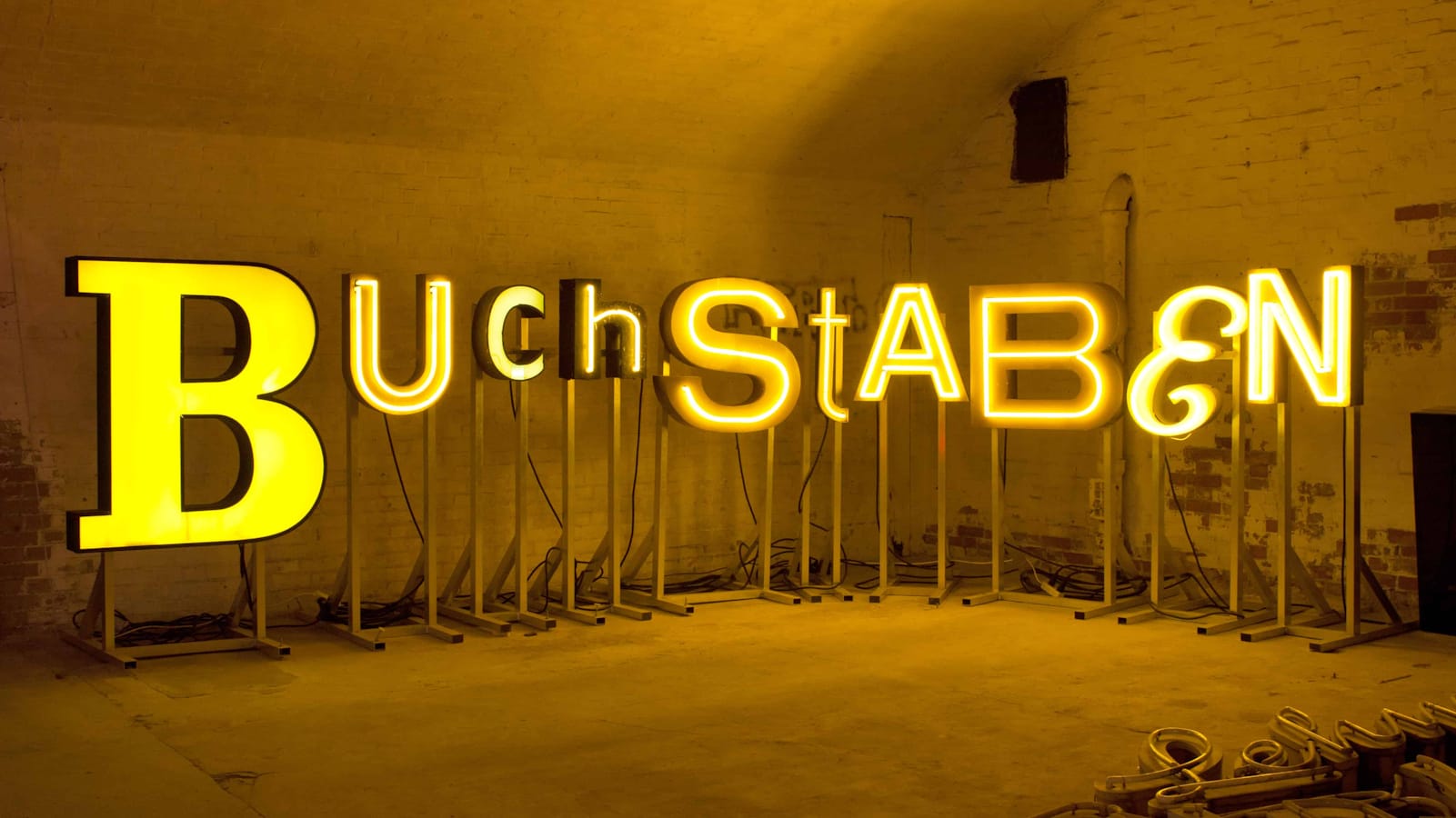
The homogenisation of high streets is a well-documented, and increasingly global, phenomenon. But have you ever wondered what happens to the signs on family-run, independent shops when the chains move in? More often than not they are tossed aside as part of the corporate facelift, but if they’re lucky they might end up under a railway arch in Berlin’s Mitte neighbourhood. Located between the city’s Tiergarten park and the Spree river, this is the home of the Buchstabenmuseum (Letter Museum), which is on a mission to preserve the graphic history and culture that is being lost, shop by shop, in Berlin and beyond.

Seizing the Initiative
The Buchstabenmuseum is one of a number of initiatives across Europe that aim to rescue, collect, and preserve the lettering and typographic heritage found on shop signs of all kinds. From Lisbon’s Letreiro Galeria to Vienna’s Stadtschrift (profiled in BLAG 05), these initiatives are typically volunteer-led, and run with little or no external funding. Berlin’s Buchstabenmuseum is no exception, but in spite of these challenges, it has been active for 20 years now, and boasts a public-facing exhibition space.
The letters and signs at the Buchstabenmuseum were initially the private collection of graphic and brand designer Barbara Dechant. Originally from Vienna, Dechant’s fascination with letters started at an early age, notably their abstracted forms outside of what can be read. She started collecting objects of typographic interest as a teenager and, after her move to Berlin in 1996, continued to rescue letters and signs whenever she saw them discarded or being allowed to fall into disrepair.

Dechant’s collection grew, and she joked with her friend Anja Schulze that they should start a museum. This quickly escalated, and in 2005 they formed a non-profit with the objective of making the artefacts more accessible to the public, and to use them for educational activities. This mission was realised three years later when the Museum first opened its doors in 2008.
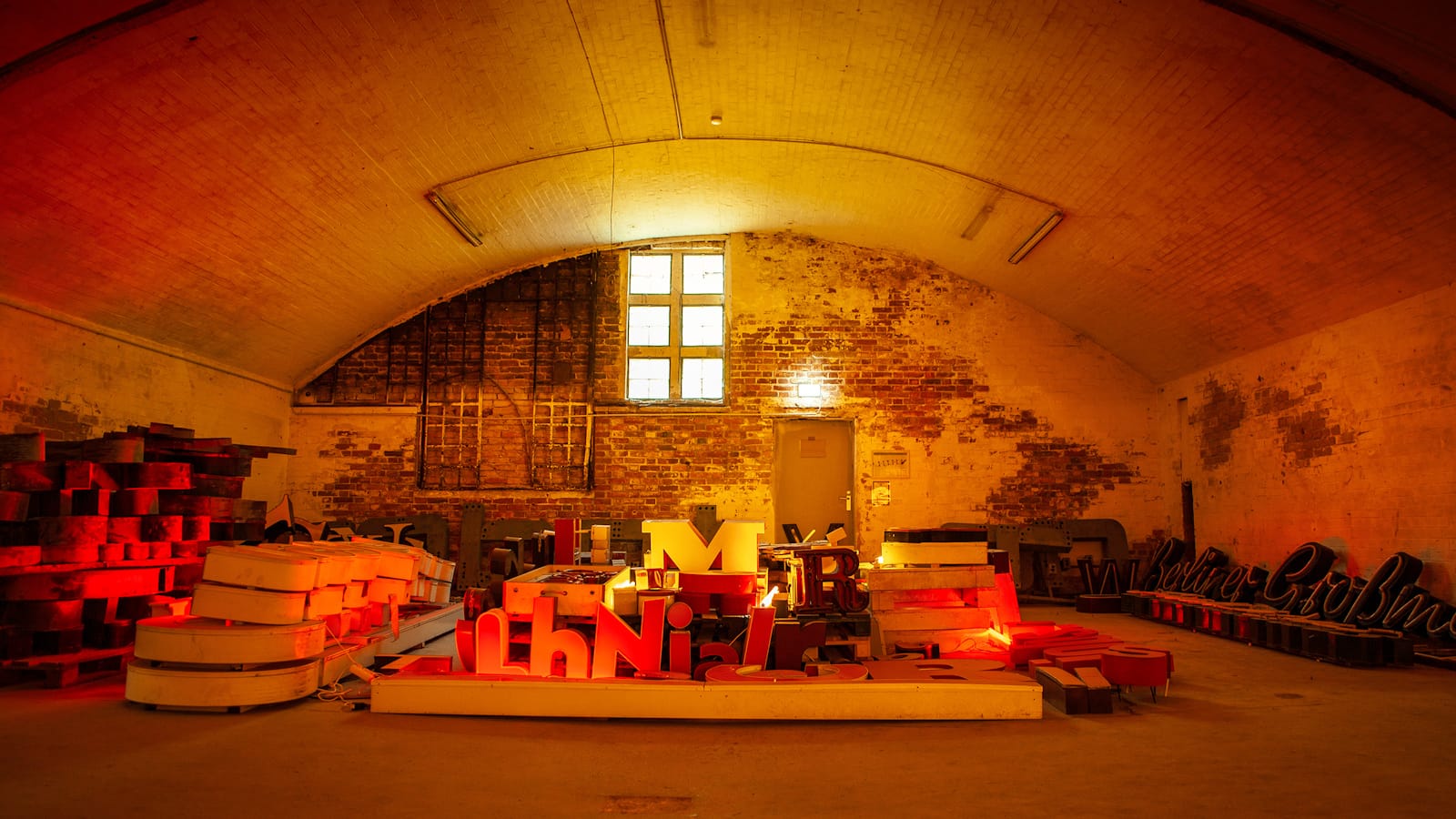
A Neverending Mission
The Museum’s reception was overwhelmingly positive and, in addition to the general public, it attracted the attention of professionals and academics in the wider realms of type design, graphic design, and architecture. Press associated with the opening, and subsequently, created more leads for Dechant and Schulze to follow up, as they quickly became magnets for news of threatened and abandoned signs. Many of these were subsequently rescued with the help of their volunteer network in Berlin, elsewhere in Germany, and even from much further afield.
Once displayed in the Museum, the signs and letters are much more than just visual novelties. Narrative texts cover topics that include the businesses they once advertised, their design and typographic elements, and the processes used in their fabrication. Providing this context enriches the exhibits, and conveys their importance within wider historical and cultural narratives.
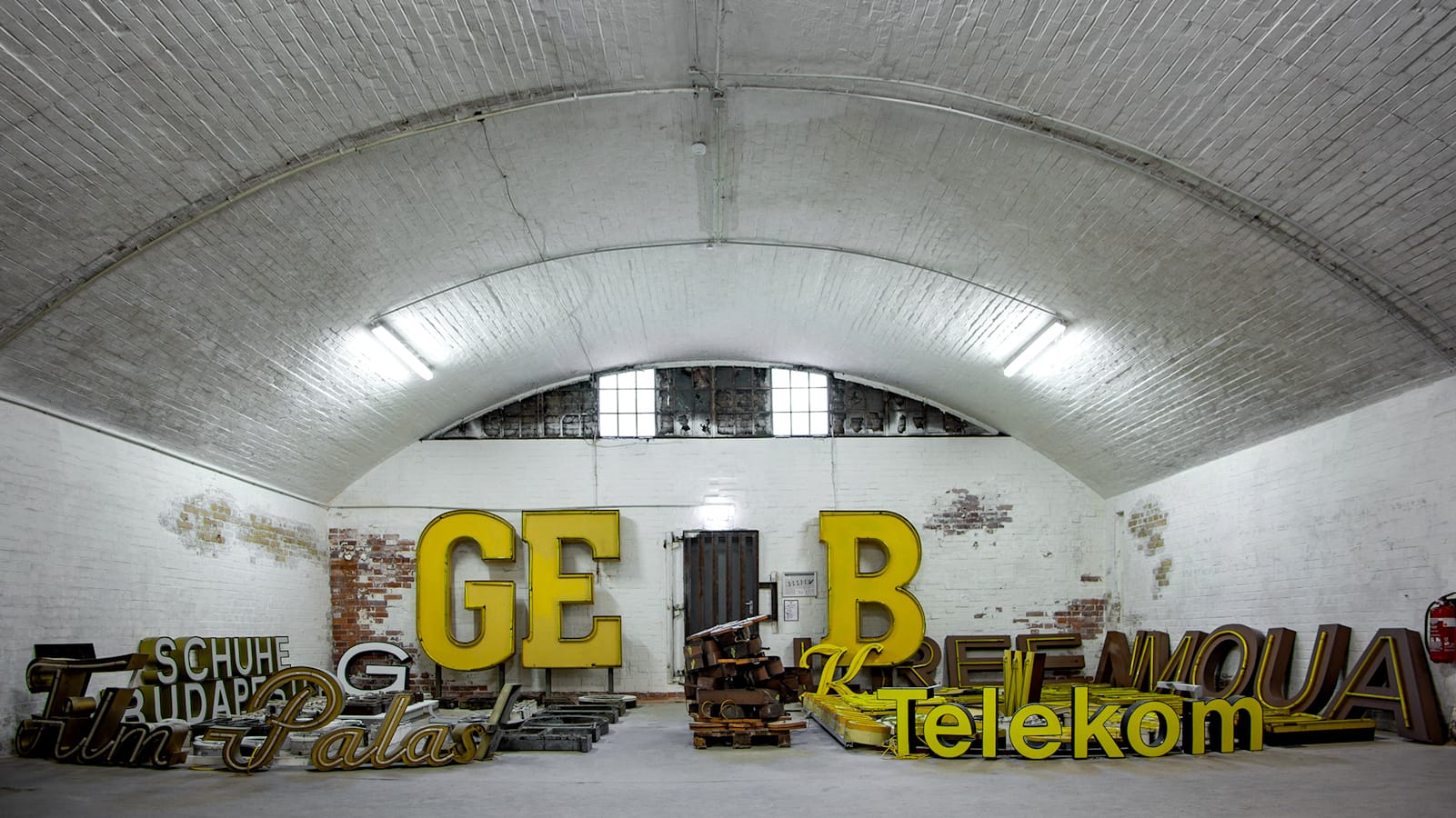
For local visitors the signs often evoke memories of particular shops, a reminder of the important role that smaller and family-run businesses play within communities. This is what is being destroyed as homogenisation sweeps the globe, and part of the Museum’s mission is making sure that it isn’t lost completely.
Moving Up (and Under) in the World
As the Museum’s collection grew, so did the need for more space to house it all. After four temporary spaces, the current location under the railway arches in Hansaviertel became home in 2016. Its cavernous spaces provide the perfect canvas for the diverse letterforms and complete signs that they house. One of these arches groups the artefacts by colour — green, blue, white, and yellow — with many letters bathing in the warm glow of their illuminated neighbours.

The collection now comprises well over 3,000 objects, and the Museum has operated an in-house neon shop since 2022. The shop carries out repair work on items from the collection, and delivers educational demonstrations and workshops that help attendees understand the craft techniques involved in the production of neon signs.
However, the continued existence of the Museum and the collection is facing some uncertainty. The current situation in Berlin is particularly difficult for the cultural sector, as affordable space is at premium and financial support from the city has been severely scaled back. In the coming weeks, this position will become clearer, with the worst possible outcome being the closure of the Museum after 20 years.
You can support the Museum and its activities via this dedicated crowdfunding page.
Making the Pilgrimage
One of the curious facets of the Museum is that the majority of its visitors are from outside Berlin, with many coming from overseas. This has been aided by regular articles in travel and trade publications, where the Museum is presented as a hidden gem.
However, as more and more locals become aware of its existence, the conversations about the letterforms themselves are increasingly being supplemented by those about the memories triggered by the displays. While the original shops may be long gone, these memories are preserved through the humble medium of the letters that once spelled their names.
PS. Here are some photos from my visit in 2016.




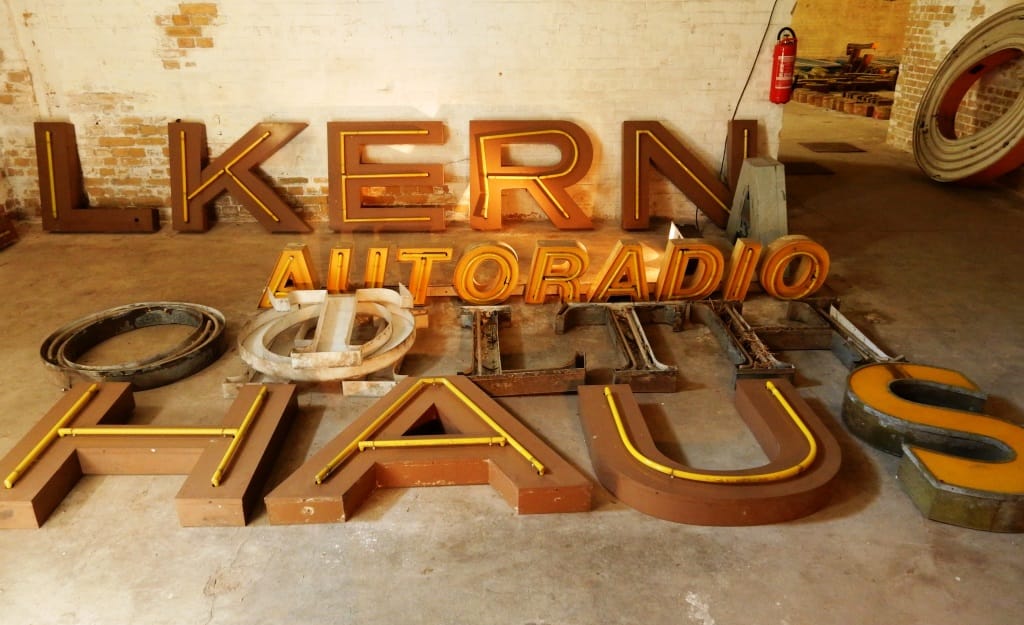
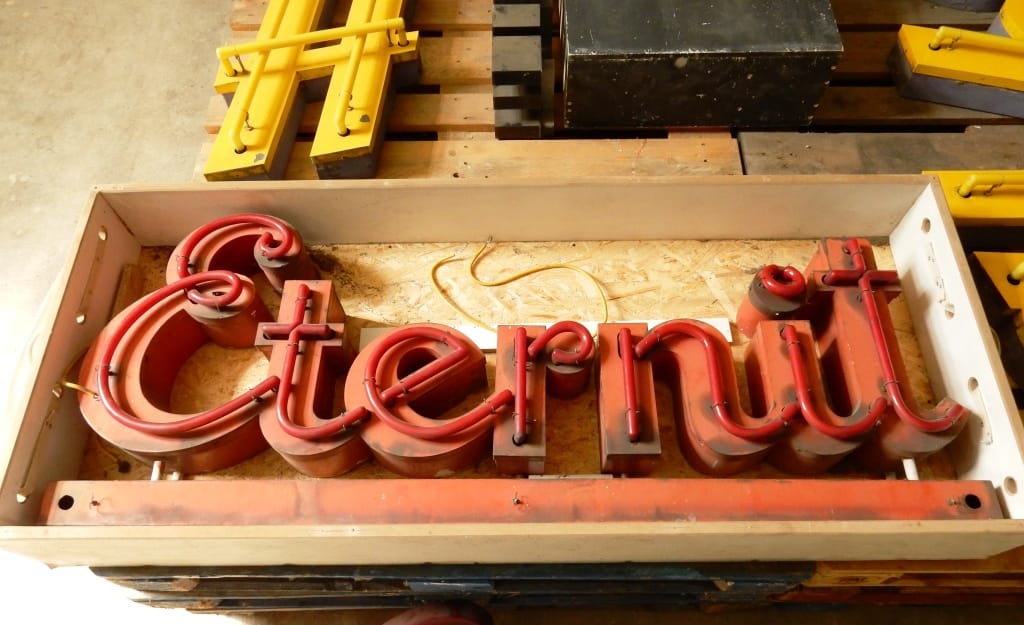
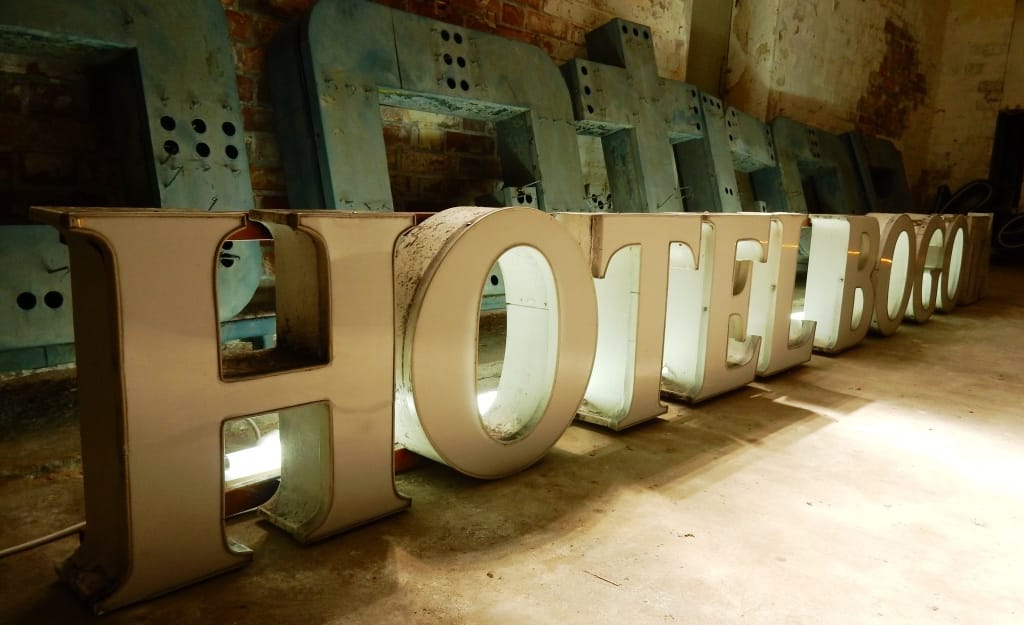
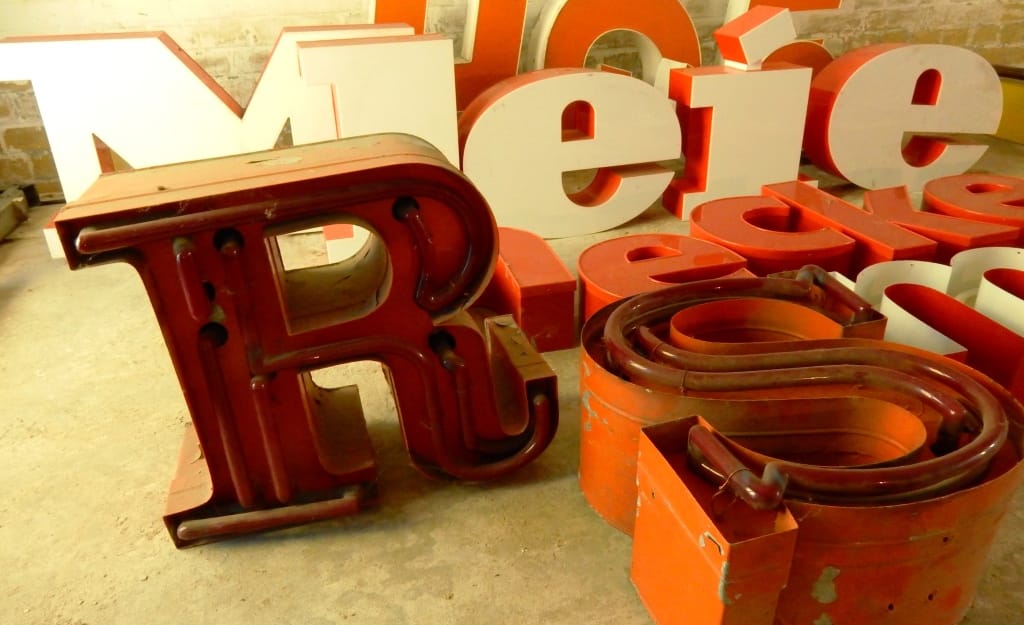

More Places
